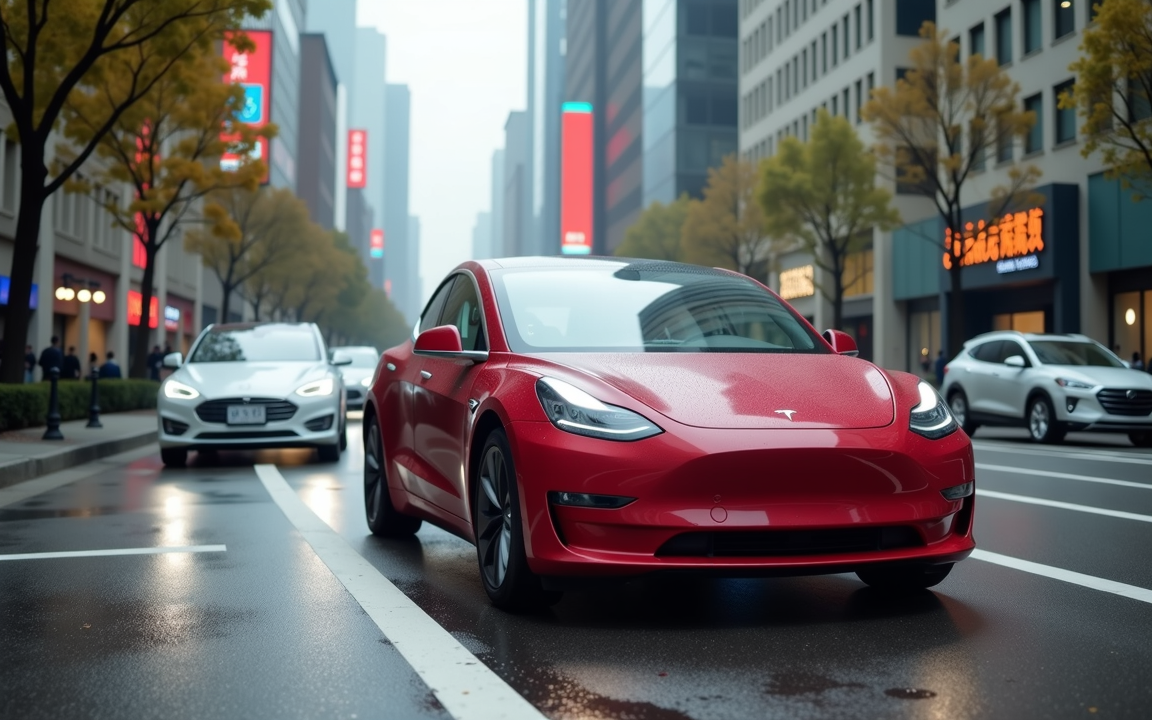
Tesla’s China sales edge up 0.8% in June; global delivery outlook remains weak
Tesla’s sales of its China-made electric vehicles edged up slightly in June, snapping an eight-month losing streak in a key market.
However, this modest gain does little to mask the broader challenges facing the US automaker, including an expected decline in overall quarterly deliveries and mounting pressure from lower-cost rivals.
Data released on Wednesday by the China Passenger Car Association (CPCA) showed that Tesla’s sales of its China-made EVs rose by 0.8% in June compared to a year earlier, reaching 71,599 units.
Deliveries of the Model 3 and Model Y vehicles produced at its Shanghai factory, which include both domestic sales in China and exports to Europe and other markets, were up a more significant 16.1% from May.
Despite this positive monthly data point, Tesla is facing fierce competition in the world’s largest auto market.
BYD, its biggest Chinese rival, saw its global car sales increase by 11% year-on-year to 377,628 units last month, underscoring the intense competitive landscape.
Quarterly delivery expectations and broader headwinds
Globally, Tesla is expected to report another fall in its quarterly deliveries on Wednesday.
This anticipated decline comes as the company continues to grapple with the backlash against CEO Elon Musk’s political views and significant competitive pressures that are dragging on demand for its vehicles.
While much of Tesla’s massive trillion-dollar valuation is predicated on Musk’s ambitious bet on commercializing robotaxis, the company’s current revenue and profits are overwhelmingly derived from its core business of selling electric vehicles—a business that has been under pressure due to high interest rates and a proliferation of new competitors.
The global EV market has continued to grow, albeit at a slower pace than in previous years. Against this backdrop, annual sales of Tesla’s aging product lineup fell for the first time in 2024.
While Musk has stated that sales will return to growth in 2025—a notable pullback from his earlier, more aggressive promise of 20-30% growth—analysts are forecasting an 8% sales decline for the company this year.
For the second quarter, which ended in June, Tesla is expected to deliver approximately 394,380 units, according to a consensus of 23 analysts polled by Visible Alpha.
If accurate, this would represent a drop of more than 11% year-over-year and would follow a 13% decline that the company reported in the previous quarter.
Tesla had attributed last quarter’s fall to a pause in production required to shift to a refreshed version of its best-selling Model Y SUV.
Analysts had initially suggested that many customers were delaying purchases in anticipation of this updated model.
The ‘new’ model Y and the Musk factor
However, the impact of the refreshed Model Y may not have lived up to initial expectations.
“I think a lot of analysts were thinking this quarter would have a bump positive because of the new Model Y,” Ross Gerber, CEO of Tesla investor Gerber Kawasaki Wealth and Investment Management, told Reuters.
“But the new Model Y in my mind isn’t such a departure from the old Model Y,” he noted, adding that demand for the model did not meet expectations.
Instead of a surge, people bought fewer Tesla vehicles. Some prospective buyers were reportedly irked by Elon Musk’s public embrace of far-right politics in Europe and his work for US President Donald Trump, where he was tasked with overseeing cuts to federal jobs and funding.
Though Musk has since shifted his focus back to his companies, the backlash, combined with customers opting for cheaper Chinese EVs, has led to five consecutive months of falling sales for Tesla in Europe.
Data from the European Automobile Manufacturers Association showed a significant 27.9% drop for Tesla in May.
In China, Tesla’s share of the EV market has shrunk to 7.6% for the first five months of 2025, down from 10% last year and a peak of 15% in 2020.
Competitors have successfully won over consumers with snazzy, new, feature-packed EVs.
For example, Xiaomi’s YU7 SUV received exceptionally strong orders within hours of going on sale last week, fanning speculation that Tesla may be forced to cut its prices to effectively fight back.
To achieve Musk’s target of returning to sales growth this year, Tesla would need to deliver more than a million units in the second half of 2025, assuming the second-quarter estimates are accurate.
This would be a record for the company and a tough challenge, according to Wall Street analysts, although sales are typically stronger in the latter half of the year.
Some assistance could come from Tesla’s planned cheaper model—expected to be a stripped-down version of the Model Y—which the company has said it will start producing by the end of June.
However, Reuters reported in April that this model would be delayed by at least a few months.
Despite these challenges, Tesla’s shares, after tanking early this year amidst angry anti-Musk protests, have regained some ground recently.
This may be partly due to progress on the autonomous driving front.
Last month, the company rolled out about a dozen robotaxis in a limited part of Austin, Texas, ferrying a small group of invited fans for a nominal fee, albeit with a safety monitor present and other operational restrictions.
The post Tesla’s China sales edge up 0.8% in June; global delivery outlook remains weak appeared first on Invezz
